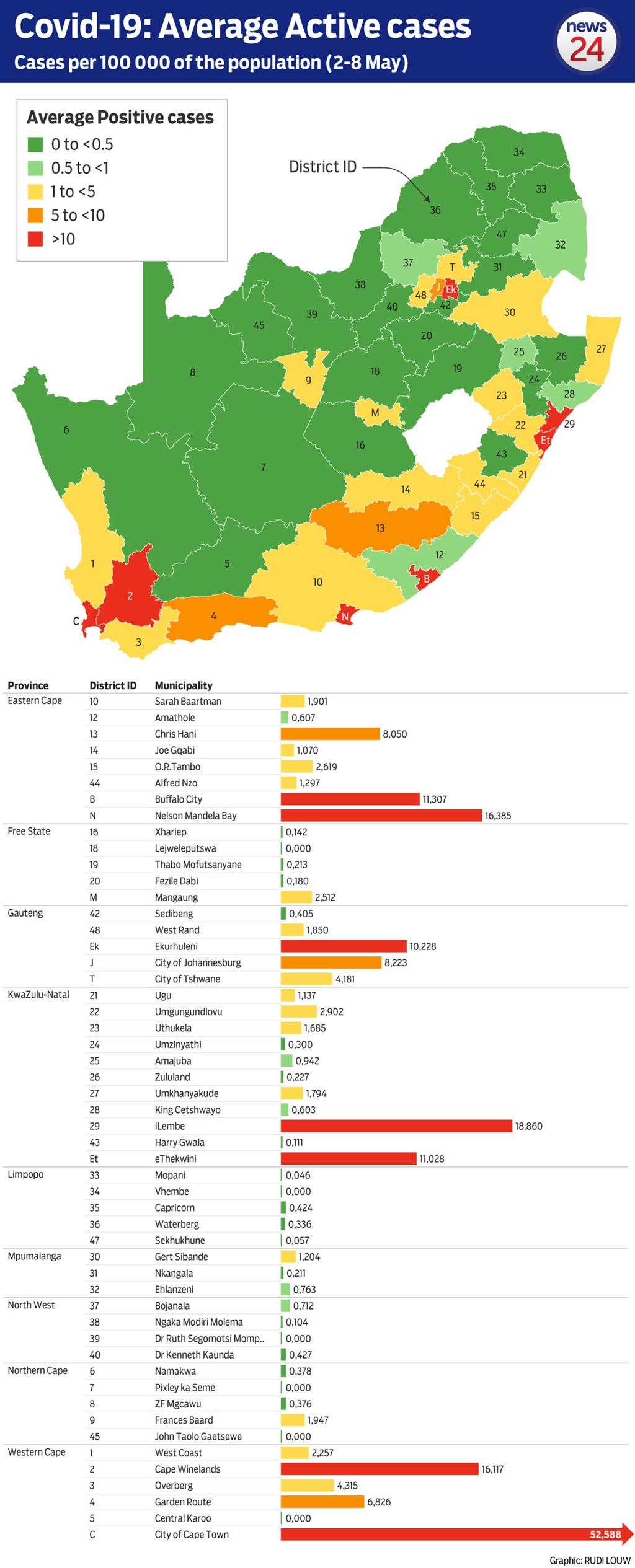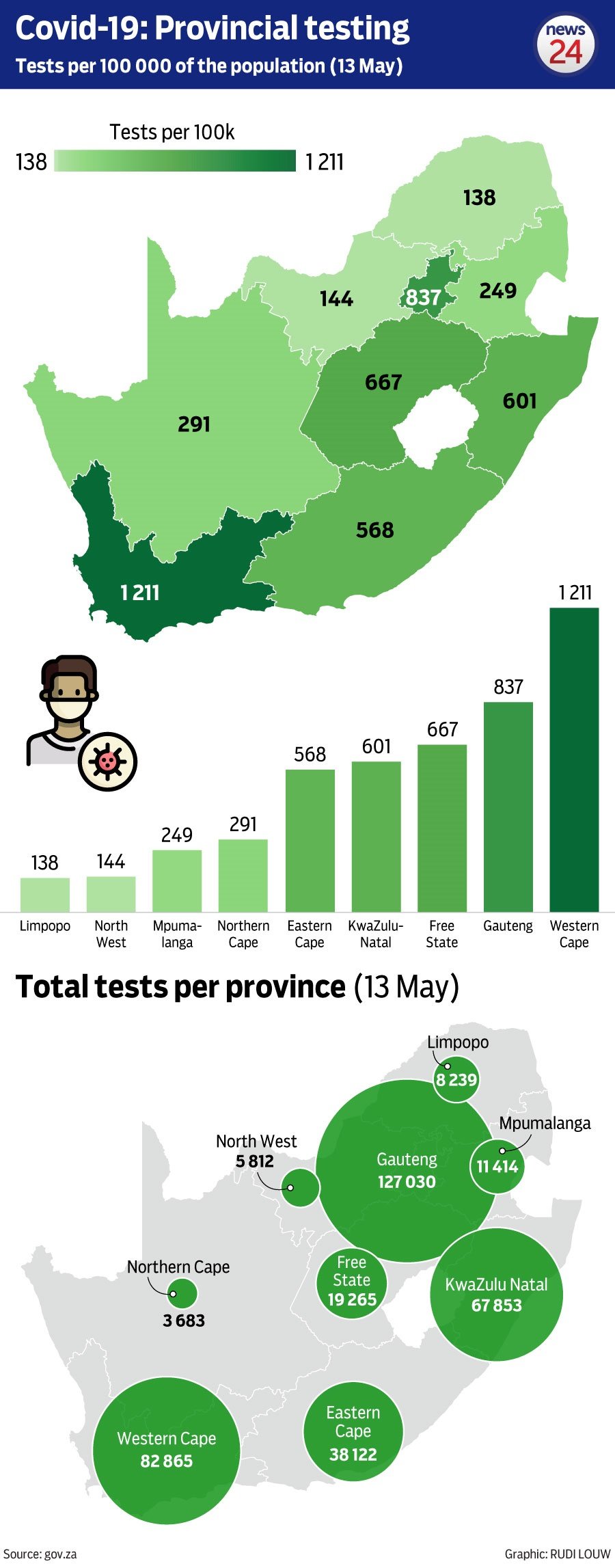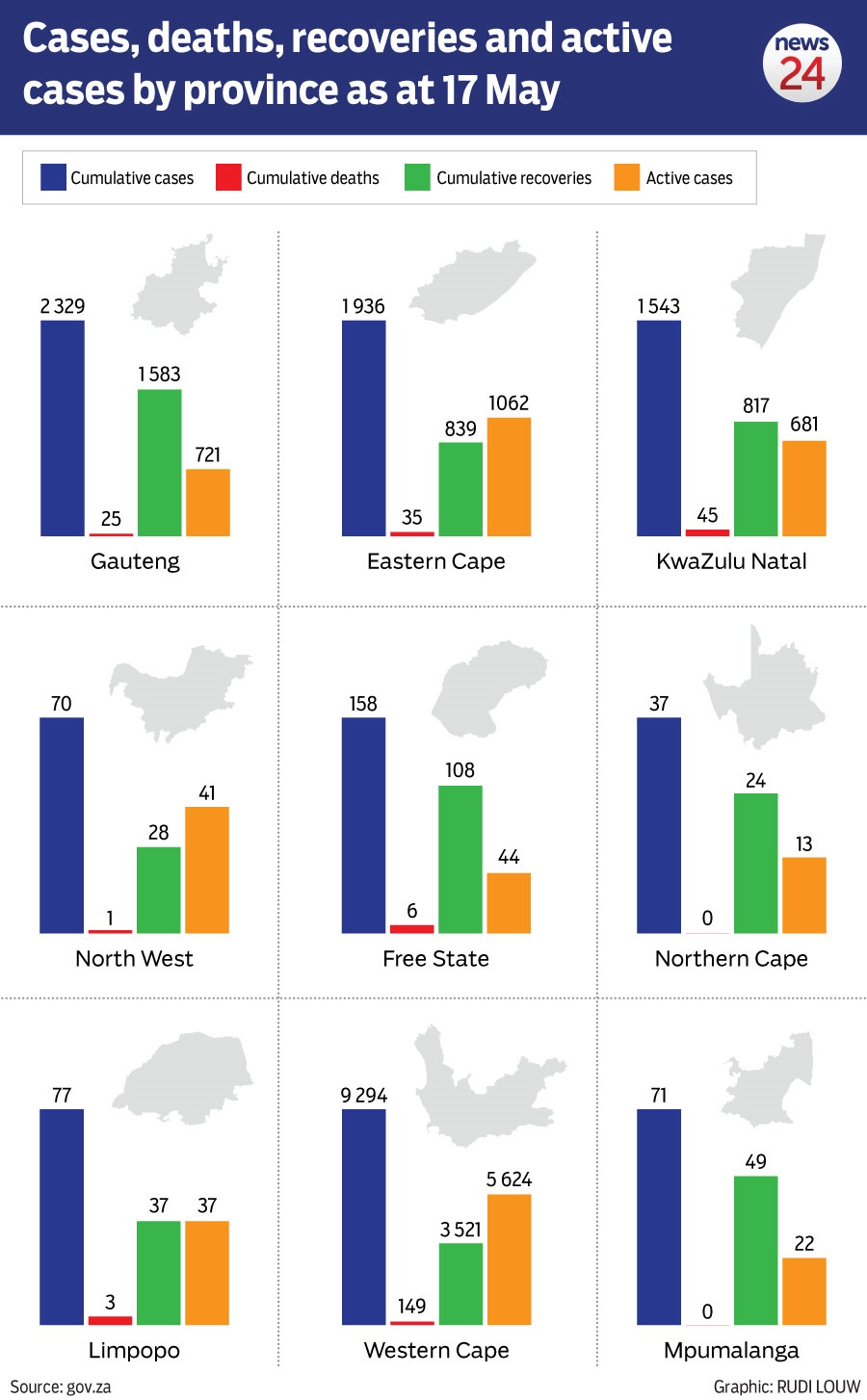2020-05-19 06:04
Kyle Cowan



Data lockdown: Tension simmers as questions are raised about access to Covid-19 information
Health Minister Zweli Mkhize explained to News24 that districts were being grouped by the average number of active cases per 100 000 people over a set time period, and categorised in intervals of between 0 and 0.5, 0.5 to 1, between 1 and 5, between 5 and 10 and above 10.
This was shared in a slide given to News24 by Mkhize’s office, which was used to build an infographic showing the levels per district:



The level of average active cases per 100 000 per district, calculated from active cases between 2 and 8 May. Graphic – Rudi Louw. (Full size)
The graphic shows that the City of Cape Town remains at the highest level by far, with average active cases topping 50 per 100 000 people between 2 and 8 May.
The next highest district is iLembe district, north of eThekwini in KwaZulu-Natal, with an average of 18 active cases per 100 000 people.
Mkhize said the rates as calculated would inform the differentiated approach to lockdown, where areas with lower active cases would be placed at lower lockdown levels – but the correlation between what level of active cases per 100 000 people and the level of lockdown that will be implemented was not immediately clear.



The number of total tests, and tests per 100 000 of the population, by province. Testing data as reported on 13 May. Graphic – Rudi Louw
This graphical representation of the total number of tests done per 100 000 people in each province, as of 13 May, provides a clear indication that the Western Cape is testing at a higher level than other provinces, followed closely by Gauteng.
As of 17 May, a total 82 865 tests were conducted in the Western Cape, compared with 127 030 in Gauteng and 67 853 in KwaZulu-Natal.
President Cyril Ramaphosa announced last week that there would be extensive consultation with provincial stakeholders, with the aim of potentially easing lockdown to Level 3 as of the end of May.
Mkhize told News24 on Saturday that South Africa was now aiming to do something no other country has done – lift lockdown while the rate of Covid-19 infections is still rising.
“The World Health Organisation (WHO) gave us a list of six criteria [for lifting lockdown restrictions] and no part of the country can actually tick them all and say they are positive,” he said.
Covid-19 tracker: All the latest figures as the coronavirus spreads in SA
The WHO criteria for lifting lockdown are:
- Evidence should show Covid-19 transmission is controlled, with strong surveillance in place and a consistent decline in number of positive cases
- Public health and health system capacities need to be in place to identify, isolate, test, treat and quarantine every case and trace every contact
- Outbreak risks need to be minimised in high-vulnerability settings, particularly in homes for the aged, mental health facilities and crowded residential areas
- Workplace and school preventative measures are established, including physical distancing, hand washing facilities and respiratory etiquette (masks)
- Importation risks must be managed
- Communities must be fully educated, engaged and empowered to adjust to the new norm (participation in the transition of lockdown)



Total number of cases, deaths, recoveries and active cases as reported by the national Department of Health on 17 May 2020. Graphic – Rudi Louw
Stay healthy and entertained during the national lockdown. Sign up for our Lockdown Living newsletter. Register and manage your newsletters in the new News24 app by clicking on the Profile tab







